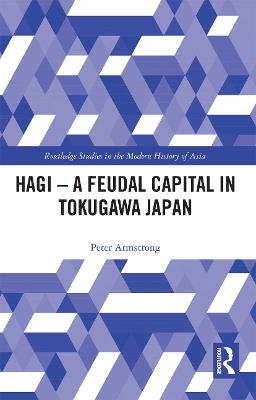
Hagi - A Feudal Capital in Tokugawa Japan
Seiten
2020
Routledge (Verlag)
978-0-367-72834-2 (ISBN)
Routledge (Verlag)
978-0-367-72834-2 (ISBN)
The western Japanese city of Hagi is the town in Japan which has preserved the greatest level of Tokugawa period (1600-1868) urban and architectural fabric. This book is both an urban and social history of this important town. The book includes a discussion of contemporary arrangements aimed at preserving Hagi’s historical heritage.
The western Japanese city of Hagi is the town in Japan which has preserved the greatest level of Tokugawa period (1600-1868) urban and architectural fabric. As such it is a major tourist destination for both Japanese and non-Japanese visitors. The city is also very important historically in that it was the capital of the feudal daimyo domain – Chōshū – which spearheaded the reform movement from the 1850s onwards which led to the overthrow of the Tokugawa shogunate and the foundation of Japan in its modern form. This book, rich in detail and very well illustrated, is both an urban and social history of this important town. It outlines the development of the layout of the city and its castle, relates this to the history of its lords, the Mōri family, and their place in Japanese history; and sets Hagi in the context of the wider Chōshū domain. The book includes a discussion of contemporary arrangements aimed at preserving Hagi’s historical heritage.
The western Japanese city of Hagi is the town in Japan which has preserved the greatest level of Tokugawa period (1600-1868) urban and architectural fabric. As such it is a major tourist destination for both Japanese and non-Japanese visitors. The city is also very important historically in that it was the capital of the feudal daimyo domain – Chōshū – which spearheaded the reform movement from the 1850s onwards which led to the overthrow of the Tokugawa shogunate and the foundation of Japan in its modern form. This book, rich in detail and very well illustrated, is both an urban and social history of this important town. It outlines the development of the layout of the city and its castle, relates this to the history of its lords, the Mōri family, and their place in Japanese history; and sets Hagi in the context of the wider Chōshū domain. The book includes a discussion of contemporary arrangements aimed at preserving Hagi’s historical heritage.
Peter Armstrong is an Associate Professor in the Faculty of Architecture, Design and Planning at Sydney University
Chapter 1 The Genesis of the Mōri family
Chapter 2 The Site and its Setting
Chapter 3 The Precedent of Ōsaka
Chapter 4 The Construction of the Castle
Chapter 5 Reclaiming the Site: the Struggle with Water
Chapter 6 Laying Out the Town
Chapter 7 The Road Systems
Chapter 8 Land Use in Hagi
Chapter 9 The Social Organisation of the Chōshū domain
Chapter 10 The National Regulation of Architecture
Chapter 11 The Regulation of Architecture in the Chōshū domain
Conclusions
| Erscheinungsdatum | 16.01.2021 |
|---|---|
| Reihe/Serie | Routledge Studies in the Modern History of Asia |
| Verlagsort | London |
| Sprache | englisch |
| Maße | 156 x 234 mm |
| Gewicht | 453 g |
| Themenwelt | Kunst / Musik / Theater |
| Geisteswissenschaften ► Geschichte ► Hilfswissenschaften | |
| Geisteswissenschaften ► Geschichte ► Regional- / Ländergeschichte | |
| ISBN-10 | 0-367-72834-6 / 0367728346 |
| ISBN-13 | 978-0-367-72834-2 / 9780367728342 |
| Zustand | Neuware |
| Haben Sie eine Frage zum Produkt? |
Mehr entdecken
aus dem Bereich
aus dem Bereich
Anforderungen an das digitalisierte Kulturerbe
Buch | Softcover (2023)
transcript (Verlag)
29,00 €
Buch | Hardcover (2024)
Wallstein Verlag
38,00 €


